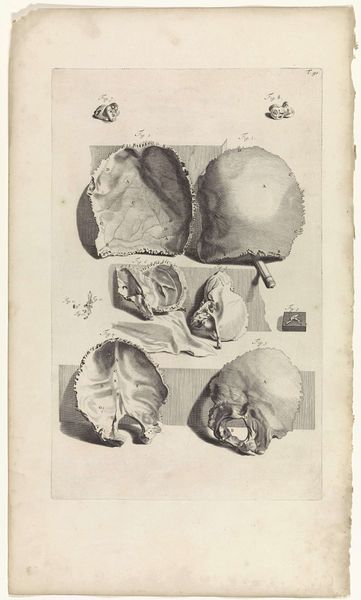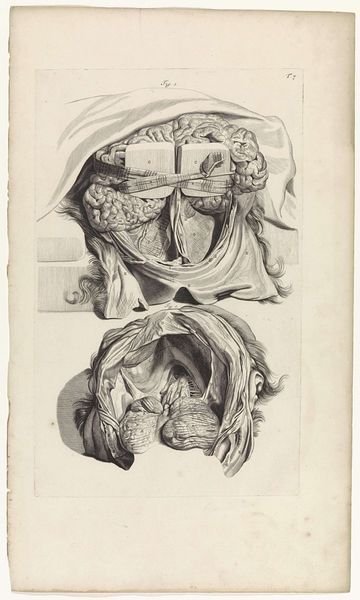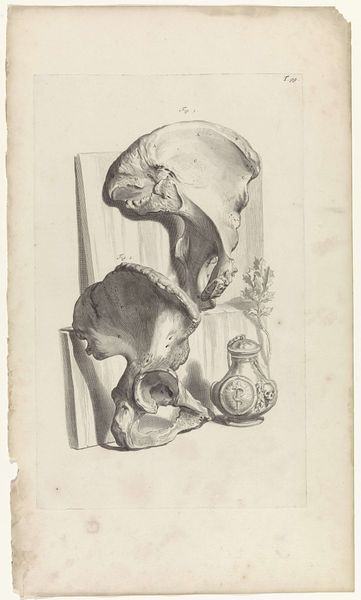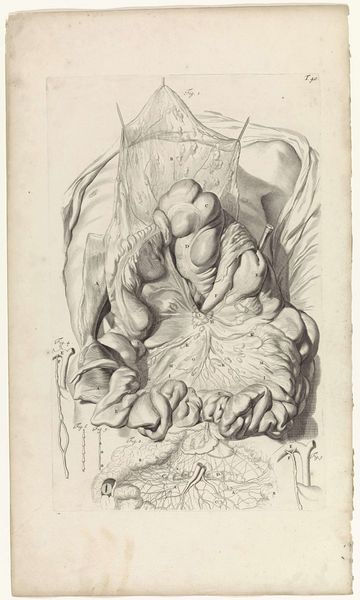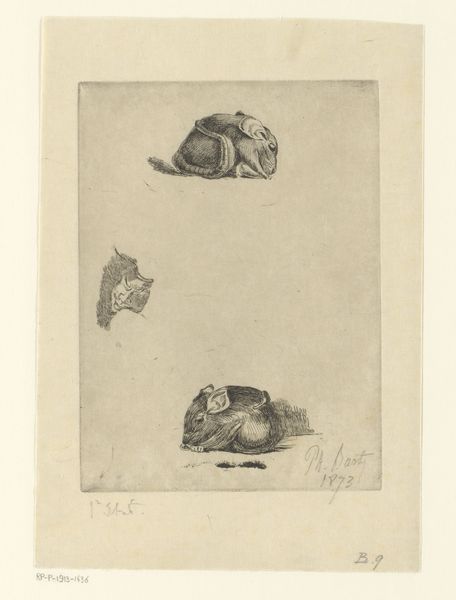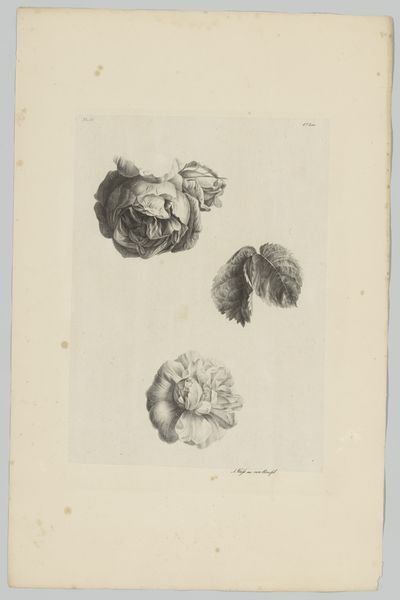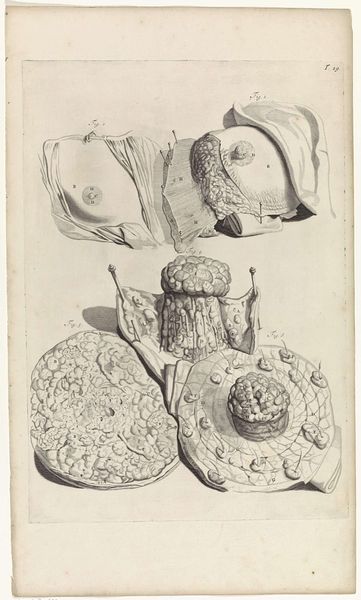
#
toned paper
#
light pencil work
#
quirky sketch
#
pencil sketch
#
old engraving style
#
personal sketchbook
#
pen-ink sketch
#
sketchbook drawing
#
watercolour illustration
#
sketchbook art
Dimensions: width 275 mm, height 440 mm
Copyright: Rijks Museum: Open Domain
Editor: Here we have "Anatomische studie van het heilig been en het staartbeen," from 1685, by Pieter van Gunst. It's currently held at the Rijksmuseum. Looking at this drawing, I’m immediately struck by the almost clinical precision of the lines, juxtaposed with the soft, draping cloth. How would you interpret the artist’s approach to this piece? Curator: This work stands out because it transcends simple anatomical illustration. Notice how van Gunst meticulously renders the bony structures using a tight, controlled linework. But observe how the use of the drapery complicates our perception, blurring the distinction between scientific representation and artistic expression. Consider how van Gunst’s choice of the aged paper contributes to a sense of history, a layering of time onto the scientific gaze. Editor: So you're saying that it's more than just about the bones themselves; it’s about the contrast between the hard and soft elements and maybe even about the passage of time? Curator: Precisely. Examine how the strategic placement of the fabric enhances the three-dimensionality of the bone. Also note the almost sculptural quality achieved through light and shadow. Van Gunst is employing artistic strategies that elevate the study to a level of aesthetic contemplation. What function, then, does each compositional element serve within the artistic totality? Editor: That’s a great point. I hadn't considered the "why" behind each artistic choice so directly. Curator: Thinking structurally, we see an interesting dynamic between objective subject and artistic intervention. Now, can we say the anatomical subject solely dictates form here? Or does Van Gunst interject meaning through more self-aware, stylized form and technique? Editor: This really changes my perspective on scientific drawings. Thanks for that deeper look! Curator: The pleasure was mine. It’s through such visual decoding that we can begin to unravel the artist’s underlying intentions.
Comments
No comments
Be the first to comment and join the conversation on the ultimate creative platform.

